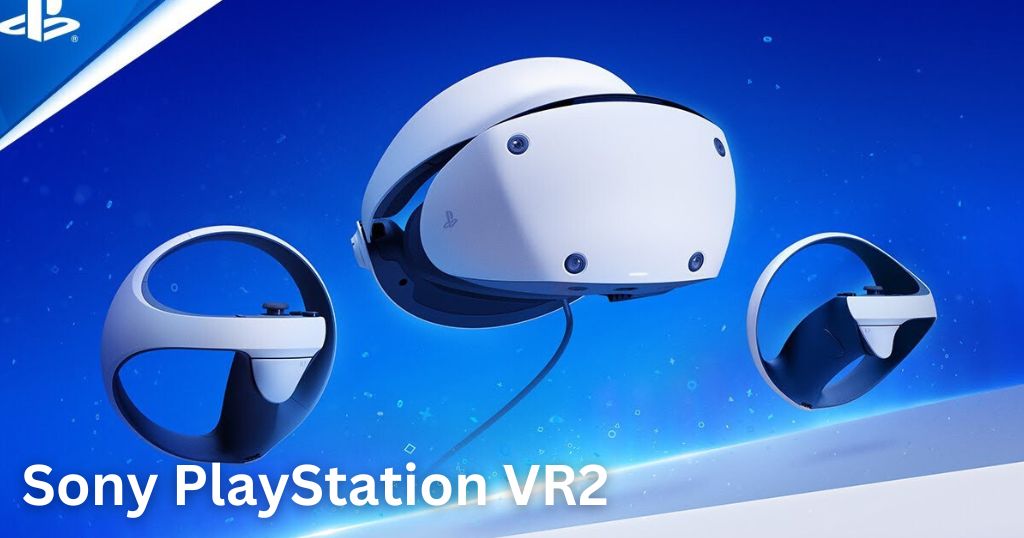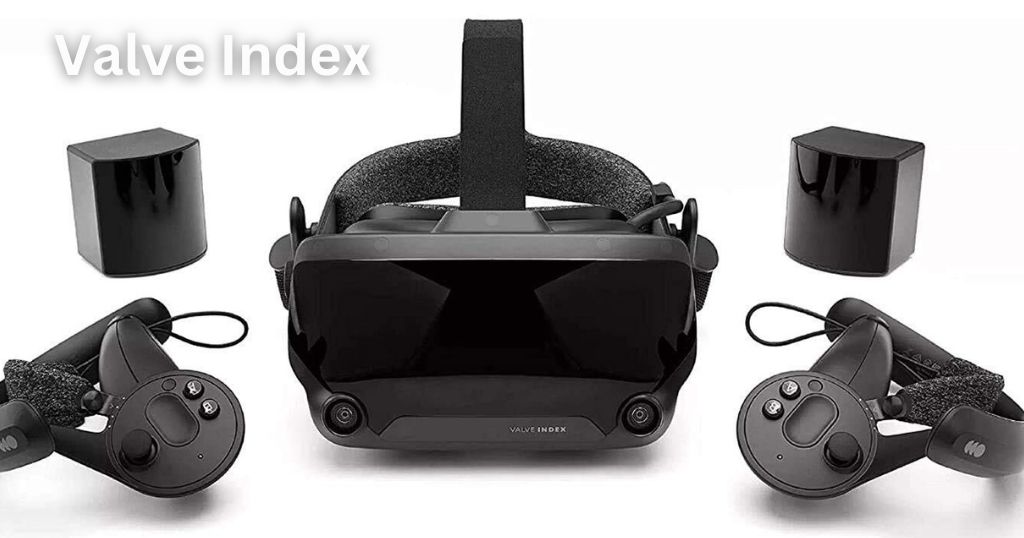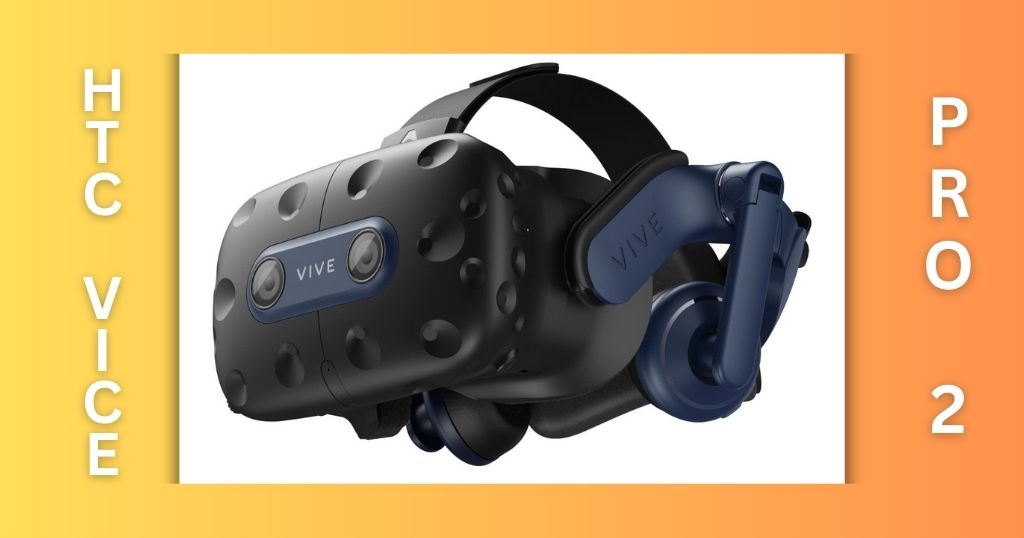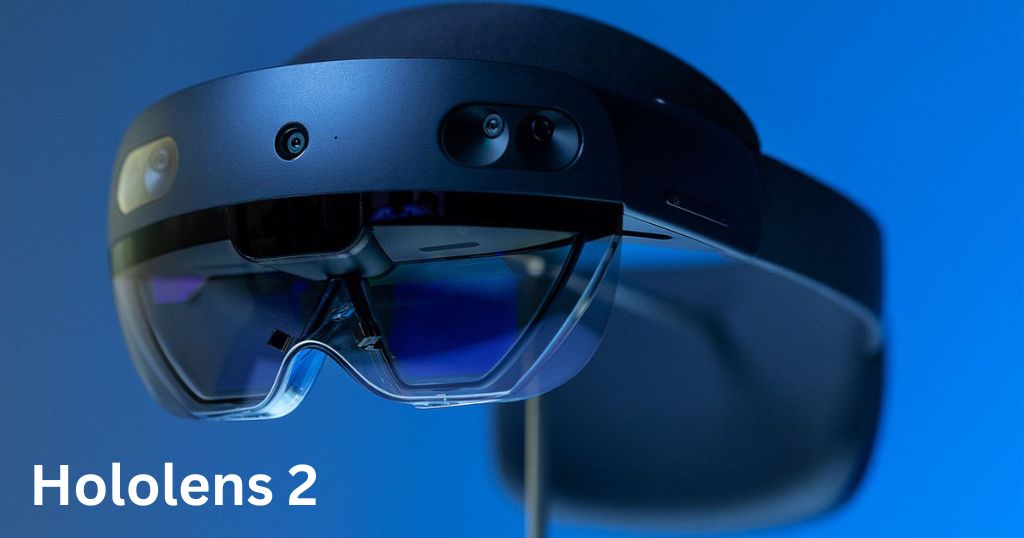
Would you pay $3,500 for a headset that lets you see digital content in your physical space? 🤔 That’s the question that Apple is asking with its new mixed-reality device, the Apple Vision Pro. The Vision Pro is Apple’s first foray into spatial computing, a technology that blends virtual reality, augmented reality, and mixed reality into one seamless experience.
🤯 But is it worth the hefty price tag? And how does it compare to other devices in the XR spectrum? 🧐 In this article, we’ll explore some of the affordable and exciting alternatives to the Apple Vision Pro in the VR, AR, and MR spectrum. We’ll also compare their features, performance, and user reviews with the Apple Vision Pro and highlight their pros and cons. Whether you’re looking for a cheaper option, a different type of experience, or a gaming-oriented headset, we’ll help you find the best VR or MR headset for your needs and preferences. 😊
Contents
Affordable Apple Vision Pro Alternatives🙌
The Apple Vision Pro is not a cheap device. At $3,500, it’s more than twice as expensive as the most advanced consumer-available VR headset on the market, the Meta Quest Pro. And that’s not even counting the cost of an iPhone 13 or later, which is required to use the Vision Pro. For many users, this price tag might be too steep 😬 to justify buying a headset that’s still in its early stages of development and adoption.
Fortunately, there are plenty of other VR and MR headsets that offer similar or even better experiences than the Apple Vision Pro, at a fraction of the cost💸. Whether you’re looking for a standalone headset that doesn’t need a phone or a PC, a tethered headset that connects to your gaming console or computer, or a mixed reality headset that blends digital and physical worlds, there’s an option for you. 🙌
Here are some of the highly rated alternatives to the Apple Vision Pro that cost less than $1,000:
Meta Quest 2 ($299)

The Meta Quest 2 is the most affordable headset on this list, and one of the best 🏆 values in VR headsets out there. The Quest 2 is an VR headset that utilizes the identical software platform as the Meta Quest Pro, only with slightly less sophisticated hardware and without the inclusion of eye tracking. Despite these differences, it provides an immersive VR experience at a significantly lower cost, amounting to just one-fifth of the price of Meta’s Pro headset.
😎 The Quest 2 features a high-resolution LCD display, built-in speakers and microphones, inside-out tracking, and touch controllers. It also supports wireless streaming from your PC via Air Link or Virtual Desktop, so you can play PC VR games 🎮 without a cable. The Quest 2 has a large library of apps and games, including popular titles like Beat Saber, Superhot VR, and Resident Evil 4 VR.
Related: Apple Vision Pro: The Future of Mixed Reality or a $3,499 Toy?
Sony PlayStation VR2 ($599)

The original PlayStation VR was a terrific headset for the PlayStation 4, and the PS VR2 is even better. 🙌 It’s bright, sharp, has new motion controllers, and is the only headset on this list besides the Meta Quest Pro that features eye tracking. 👀 If you have a PlayStation 5, the PS VR2 offers a top-notch VR experience. Our only complaint is that it doesn’t work 😞 with original PS VR games.
The PS VR2 features an OLED display with HDR support, built-in headphones and microphones, inside-out tracking, and adaptive triggers. It also supports haptic feedback via the DualSense controller or a vest accessory💥. The PS VR2 has a solid library of exclusive games, including Astro Bot: Rescue Mission, Blood & Truth, and Iron Man VR.
Valve Index ($999)

The Valve Index is a tethered VR headset that needs to be plugged in to a fairly powerful PC and requires tracking stations to be placed in the room to work properly. 😅 That clunky tech, however, results in a powerful VR experience that can offer better graphics and performance than any other headset on this list (except for perhaps the PlayStation VR2).
💯 The Index also features the most advanced motion controllers we’ve seen, which can track individual finger 🖐️ movements like the Apple Vision Pro. The Index features an LCD display with a high refresh rate of up to 144Hz, built-in speakers and microphones, outside-in tracking via SteamVR base stations, and adjustable IPD. It also supports SteamVR’s vast library of games and apps, including Half-Life: Alyx, Boneworks, and No Man’s Sky.
XR Spectrum: VR, AR, and MR Alternatives to the Apple Vision Pro
The Apple Vision Pro is not just a VR headset. It’s also a mixed reality headset that can blend digital content with your physical space, thanks to its eye tracking and color cameras📷. Apple calls this new technology spatial computing, and it’s part of a broader category of immersive technologies known as extended reality or XR. 🤯
XR encompasses different types of reality technologies that alter our perception of the physical environment or even completely replace the real world. XR includes three primary elements: VR, AR, and MR. Each of these technologies offers a different level of immersion and interaction with digital and physical elements. 🙌
- Virtual reality (VR) is the most immersive form of XR, where you dive headfirst into a computer-generated world. VR blocks out everything but computer-generated images, so you feel like you’re in a different place🌎. VR requires a headset that covers your eyes and ears, and often controllers that track your hand movements. VR is great for gaming🎮, entertainment, education, and training.
- Augmented reality (AR) is the least immersive form of XR, where you see digital elements overlaid on your view of the real world. AR enhances or changes your physical environment in some way, but doesn’t block out anything. 👀 AR can work through a headset or a smartphone, and often uses sensors and cameras to track your position and orientation. AR is great for shopping 🛍️, navigation, social media, and art.
- Mixed reality (MR) is somewhere in between VR and AR, where you see digital elements anchored to your physical space and interacting with it. MR blends digital and physical worlds in real time, creating a seamless experience😍. MR usually requires a headset with cameras and sensors that can detect your environment and hand input. MR is great for collaboration, productivity, design, and education 💻.
The Apple Vision Pro is an MR headset that can also offer VR experiences by blocking out the real world with its Light 🔦Seal feature. However, it’s not the only headset that can do both MR and VR. There are other devices in the XR spectrum that offer similar or even better experiences than the Apple Vision Pro, at a lower cost or with different features. 😎
Here are some examples of VR, AR, and MR headsets that offer different experiences than the Apple Vision Pro:
HTC Vive Pro 2 ($799)

The HTC Vive Pro 2 is a tethered VR headset that connects to your PC and requires base stations to track your movements. It features a high-resolution LCD display with a wide field of view, built-in headphones and microphones, inside-out tracking via SteamVR base stations, and adjustable IPD. It also supports eye 👀 tracking via an optional accessory. The Vive Pro 2 can offer stunning graphics and performance for VR games and apps, but it doesn’t have color cameras or hand tracking like the Apple Vision Pro.
Microsoft HoloLens 2 ($3,500)

The Microsoft HoloLens 2 is a standalone MR headset that runs on Windows 10. It features a transparent display that lets you see digital content in your physical space, built-in speakers and microphones, inside-out tracking via depth sensors and cameras, and eye tracking. It also supports hand ✋tracking and gestures, so you can interact with holograms without controllers. The HoloLens 2 can offer amazing MR experiences for collaboration, productivity, design, and education, but it doesn’t have a Light Seal feature like the Apple Vision Pro.
Magic Leap One ($2,295)

The Magic Leap One is a standalone MR headset that runs on its own operating system called Lumin OS. It features a transparent display that lets you see digital content in your physical space, built-in speakers and microphones, inside-out tracking via depth sensors and cameras, and eye tracking. It also supports hand tracking and gestures, as well as a controller🎮 that tracks your hand movements. The Magic Leap One can offer immersive MR experiences for entertainment, gaming, art, and education, but it doesn’t have a Light Seal feature like the Apple Vision Pro.
Best VR headset for gaming🎮: Apple Vision Pro vs competitors
The Apple Vision Pro is not just a mixed reality headset. It’s also a VR headset that can offer immersive gaming experiences, thanks to its Light Seal feature that blocks 🙈 out the real world. The Vision Pro features a high-resolution OLED display, built-in speakers and microphones, inside-out tracking via eye tracking and color cameras, and hand tracking via infrared sensors. It also supports a controller that can track your hand movements and gestures, as well as haptic feedback via a vest accessory.
But is the Apple Vision Pro the best VR headset for gaming? 🤔 And how does it compare to other gaming VR headsets on the market? While the Vision Pro has some impressive features and performance, it also has some drawbacks and limitations 😕 that might make it less appealing for gamers.
First of all, the Vision Pro is very expensive. At $3,500, it’s more than three times as expensive as the most advanced gaming VR headset on the market, the Valve Index. And that’s not even counting the cost of an iPhone 13 or later, which is required to use the Vision Pro. For many gamers, this price tag might be too high 😬 to justify buying a headset that’s still in its early stages of development and adoption.
Secondly, the Vision Pro is not very compatible. It only works with iOS devices and Mac computers, which limits its access to a wide range of games and apps. It also doesn’t work with SteamVR or Oculus platforms, which are the most popular and well-developed VR ecosystems. The Vision Pro has its own app store called App Reality, but it’s still new and has a limited 😢 selection of games and apps.
Thirdly, the Vision Pro is not very comfortable. It weighs 1.5 pounds, which is heavier than most VR headsets on the market. It also has a bulky design that might not fit well on different head shapes and sizes. The Vision Pro has a two-sided strap with a wide angled pad in the back to hold your head, but it might not be enough 😓 to distribute the weight evenly and prevent fatigue.
So what are some of the alternatives to the Apple Vision Pro for gaming? Here are some of the best gaming VR headsets that compete with the Apple Vision Pro:
PlayStation VR2 ($599)

The PlayStation VR2 is a tethered VR headset that connects to your PlayStation 5 console and requires a camera to track your movements. It features an OLED display with HDR support, built-in headphones and microphones, inside-out tracking via eye tracking and color cameras, and adaptive triggers. It also supports haptic feedback via the DualSense controller or a vest accessory. 💥 The PS VR2 has a solid library of exclusive games, including Astro Bot: Rescue Mission, Blood & Truth, and Iron Man VR.
Valve Index ($999)

The Valve Index is a tethered VR headset that connects to your PC and requires base stations to track your movements. It features an LCD display with a high refresh rate of up to 144Hz, built-in speakers and microphones, outside-in tracking via SteamVR base stations, and adjustable IPD.
It also supports eye tracking via an optional accessory. 👁️ The Index also features the most advanced motion controllers we’ve seen, which can track individual finger 🖐️ movements like the Apple Vision Pro. The Index supports SteamVR’s vast library of games and apps, including Half-Life: Alyx, Boneworks, and No Man’s Sky.
Meta Quest Pro ($999)

The Meta Quest Pro is a standalone VR headset that runs on its own operating system called Quest OS. It features an LCD display with a high resolution and refresh rate, built-in speakers and microphones, inside-out tracking via eye tracking and depth sensors, and hand tracking via infrared sensors. It also supports a controller that can track your hand movements and gestures, as well as haptic feedback via a vest accessory. 💥
The Quest Pro can offer stunning MR experiences for collaboration, productivity, design, and education, but it can also offer immersive VR experiences for gaming and entertainment. The Quest Pro supports Meta’s own app store called App Lab, as well as SteamVR and Oculus platforms via wireless streaming from your PC.
Related: Apple Vision Pro Vs HoloLens 2. Which One Is Better?
How to choose the best VR or MR headset for your needs and preferences 🤓
With so many VR and MR headsets on the market, how do you decide which one is right for you? There are several factors to consider when choosing a VR or MR headset, such as:
The type of VR or MR headset you need
The VR or MR headset market in 2023 sees devices fall into one of four main categories: PC VR gaming, console VR gaming, standalone VR, and mixed reality. PC VR gaming headsets connect to your PC and offer the best graphics and performance, but they also require a powerful PC 🖥️ and a cable.
Console VR gaming headsets connect to your gaming console and offer exclusive games 🎮 and features, but they also require a console and a camera. Standalone VR headsets run on their own operating system and don’t need a phone or a PC, but they also have limited battery life 🔋 and storage. Mixed reality headsets blend digital and physical worlds and offer unique experiences, but they also have high price 💸 tags and compatibility issues.
The features of the VR or MR headset
All VR and MR headsets come packed with features, but some more than others. Some of the features to look for are: display 📺 resolution and refresh rate, which affect the clarity and smoothness of the image; field of view, which affects how much of the virtual world you can see; 👀 tracking system, which affects how accurately the headset can track your head and hand movements; 🕹️ controllers, which affect how you can interact with the virtual world; 🎮 audio system, which affects how immersive the sound 🔊 is; eye 👁️ tracking, which affects how realistic the eye contact and gaze are; hand tracking, which affects how natural the hand ✋ gestures are; haptic feedback, which affects how realistic the touch sensations are. 💥
The price of the VR or MR headset
The price💰 of VR and MR headsets varies widely depending on the type and features of the headset. Generally speaking, PC VR gaming headsets are the most expensive, followed by mixed reality headsets, console VR gaming headsets, and standalone VR headsets. The price💰 also depends on whether you need to buy additional accessories or devices to use the headset.
For example, if you want to use a PC VR gaming headset, you need to have a compatible PC; if you want to use a console VR gaming headset, you need to have a compatible console; if you want to use a mixed reality headset, you need to have a compatible phone📱 or computer.
The performance of the VR or MR headset
The performance🚀 of VR and MR headsets depends largely on the type and features of the headset. Generally speaking, PC VR gaming headsets offer the best performance in terms of graphics and frame rate, followed by console VR gaming headsets, standalone VR headsets, and mixed reality headsets. The performance🚀 also depends on whether you have a stable internet connection and enough storage space to download and run games and apps. For example, if you want to use a PC VR gaming headset or a mixed reality headset that connects to your PC, you need to have a fast internet connection and enough storage space on your PC; if you want to use a standalone VR headset or a mixed reality headset that runs on its own operating system, you need to have enough storage💾 space on your headset.
The comfort and design of the VR or MR headset
The comfort and design of VR and MR headsets affect how long and how enjoyable your experience is. Some of the factors to consider are: weight, which affects how heavy⚖️ the headset feels on your head; size, which affects how bulky the headset looks😎 on your face; shape, which affects how well the headset fits your head shape and size; 😊 strap system, which affects how securely and comfortably the headset holds your head🙆♂️; padding system, which affects how soft and cushiony the headset feels on your face😌; ventilation system, which affects how cool and breathable the headset is😅; lens system, which affects how clear and adjustable the vision🔍 is.
I hope this would have given you a perfect idea 💡 to select a right headset for yourself 😀.
Conclusion
The Apple Vision Pro is a groundbreaking device that offers a new way of experiencing spatial computing. It’s a mixed reality headset that can also offer virtual reality experiences, thanks to its eye tracking and color cameras. It’s a powerful and versatile device that can offer stunning graphics and performance, as well as realistic hand tracking and haptic feedback😍.
But you should know, the Apple Vision Pro is not for everyone. It’s very expensive, not very compatible, and not very comfortable. It also requires an iPhone 13 or later to use, which adds to the cost and limits the access😕.
If you’re looking for a cheaper or different option, there are plenty of other VR and MR headsets that can offer similar or even better experiences than the Apple Vision Pro. Whether you’re looking for a standalone headset that doesn’t need a phone or a PC, a tethered headset that connects to your gaming console or computer, or a mixed reality headset that blends digital and physical worlds, there’s an option for you🙌.
The best VR or MR headset for you depends on your needs and preferences. You should consider the type, features, price, performance, comfort, and design of the headset before making a decision. You should also do some research online🕵️♂️ or try out different headsets in person before buying one.
We hope this article has helped you find the best VR or MR headset for you. If you have any questions or feedback😊, feel free to leave a comment below.

Hey there! I’m Kuldeep Kumar, and tech is my jam. From the mind-blowing world of AI to the thrilling battlegrounds of cybersecurity, I love exploring every corner of this amazing world. Gadgets? I geek out over them. Hidden software tricks? Bring ’em on! I explain it all in clear, bite-sized chunks, laced with a touch of humor to keep things sparky. So, join me on this tech adventure, and let’s demystify the wonders of technology, one blog post at a time.
